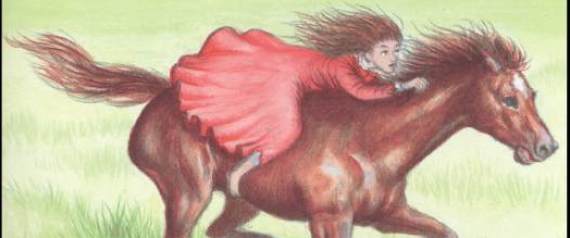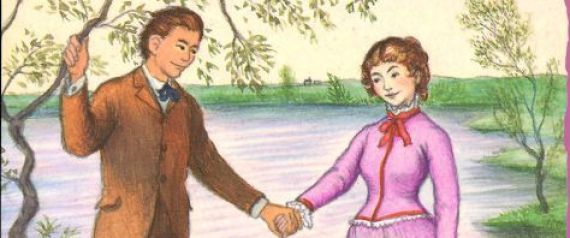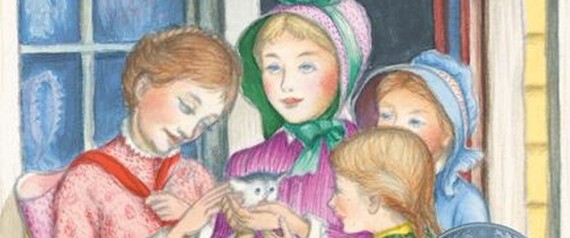The Little House on the Prairie books are so widely known, it's hard to believe that the real-life Laura Ingalls Wilder has been gone for nearly 60 years. Born in Pepin, Wisconsin, she would have turned 147 this year. She immortalized her pioneering family in the Little House books, written and published in the 1930s with the help of her daughter, Rose. The enduring popularity of these books is testament to how the story of the Ingalls and Wilders reaches across generations and cultures. For me, the daughter of immigrants, the Ingalls' migrations westward seemed a parallel to my family's travels. I may not have looked anything like Laura but I identified with her nonetheless, coming of age in the Midwest, understanding isolation and uncertainty, falling in love with books and words. Laura and Rose's story stayed with me into adulthood and inspired my new novel Pioneer Girl. Reading and rereading the Little House books, I learned some lessons on how to shape up, grow up, and manage.

There's nothing wrong with having an "itchy wandering foot."
The Ingalls lived in Wisconsin, Kansas, Minnesota, and Iowa before settling in what is now South Dakota in 1879. After Laura married Almanzo Wilder, they moved several times too, including a stint in Florida, before deciding on a farm in Missouri. The lesson? Don't be afraid to pick up and move. If it doesn't work out, move again. The Ingalls and Wilders kept on because they were on the lookout for better opportunities, better land, better chances. They were restless. They were curious. They were hopeful. Sure, they encountered failed crops, plagues of locusts, harsh weather, fires, illness, debt. But they kept taking risks and kept building new lives until they found the right place to call home.
Hunger is the best sauce.
Hardly a chapter goes by without glorious descriptions of food: light biscuits and crisp salt pork, oyster soup and fried potatoes, chicken pie and baked beans with molasses. The characters love every bite because they know where their food comes from and they don't take it for granted. In hard times, a bit of fresh butter can be a beautiful luxury, an orange a rare treat. The Ingalls and Wilders know that the seasons and harvests can be unpredictable so it's best to savor what you have and share what you can. If there's plenty, have seconds. If sweets are seldom, make them last. Sometimes the only pleasure in a day might be found in the taste or anticipation of good food.

No matter your size, you can be, as Pa says, "strong as a little French horse."
Laura's father calls her "half pint" because she is small, never growing taller than five feet. But he knows, as she does, that she is more than capable. Nothing can stop her from fishing, stacking hay, bringing in the woodpile, helping to train wild horses--in addition to the usual tasks involved in keeping home and garden well-tended. At age 14, Laura starts earning money through seamstress work in town. At age 15, she becomes a schoolteacher. In her real life beyond the narrative of the Little House books, she raised a family and built a farm in the Ozarks. In her forties she wrote a column about farm life for The Missouri Ruralist. In her sixties she became a best-selling author.

Let your man know where you stand.
After Almanzo starts courting Laura, her old enemy Nellie Oleson makes a play for him by inviting herself on their horse and buggy rides. Laura endures this only briefly before telling Almanzo: "If you want to take Nellie for a drive, do so, but do not come by for me." And just like that, Nellie is out of the picture. Later, after Almanzo proposes to Laura, she tells him that she will not obey him or include the vow to obey him in their ceremony (Almanzo, in turn, says he would never expect her to do so).

"Your two eyes are quick enough, and your tongue, if you will use them."
So says Pa to Laura, after her sister Mary loses her eyesight. Laura Ingalls Wilder took this advice to heart. Landscape, setting, farming, clothing--every moment is detailed in these books. Want to know how to make cheese or sourdough or maple candy? Want to know how to make a straw hat? A ball from a pig's bladder? Want to know how to dig a well or build a railroad? How to twist sticks of hay into makeshift fuel? The instructions and descriptions are all here, the big and small dramas of everyday life. Laura didn't work on these books until decades after she'd lived them, but she had the power of a great memory trained by years of paying attention and taking mental notes. Her daughter, Rose, had years of practice as a writer, journalist, and diarist. Together they built the Little House.
Weather the blast.
Pioneering, farming, and making do taught Laura to keep going, even when the setbacks--including the loss of a brother and the loss of a son--were shattering. Later in life, Laura persisted in writing as well. Her first manuscript, a memoir called Pioneer Girl, was turned down by publishers. Upon an editor's suggestion, she and Rose reshaped it into a series of children's books. Laura was 65 years old when Little House in the Big Woods was finally published. All her life she had struggled to make ends meet. The huge success of the Little House books took care of her financial fears and made real a long-held dream of being a writer.